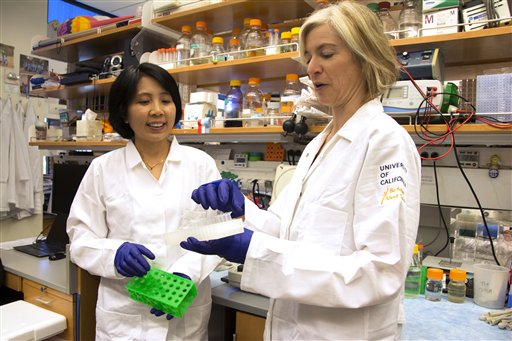In the last century, humanity has made remarkable strides in extending lifespans. Today, advancements in healthcare, technology, and living conditions have made it possible for many to live longer and healthier lives. While this progress is a triumph, it comes with a crucial question: Can societies and individuals afford the costs of longevity?
The secret to longevity isn’t just living longer, but living well—and this requires a society that supports health and opportunity for all, regardless of income or status.
Laura L. Carstensen, Director of the Stanford Center on Longevity.
This blog explores the economics of living longer, the challenges posed by an aging population, and whether access to extended lifespans is equally distributed across all socioeconomic groups.
The Rising Tide of Longevity
Global life expectancy has increased dramatically in the past century. In 1960, the average global life expectancy was just 52.6 years. By 2021, it had risen to approximately 72.8 years, thanks to reduced infant mortality rates, improved healthcare, and better living conditions.

This increase, though celebrated, has created complex economic challenges. Longer lifespans strain healthcare systems, disrupt pension sustainability, and raise questions about the role of aging populations in the workforce. The question remains: can the financial systems supporting individuals and societies adapt to the new reality of extended life?
Economic Pressures of Living Longer
1. Healthcare Costs
Older adults require more frequent and expensive medical care, placing significant financial strain on individuals and governments alike. In the U.S., the elderly account for a large proportion of healthcare spending, with costs surging in the last years of life.
According to data from PubMed, the distribution of healthcare costs over a lifetime highlights the economic pressures that come with aging. Policymakers face the dual challenge of ensuring adequate care while managing costs.
2. Pension Systems at Risk
Living longer means retirees collect pensions for extended periods, threatening the solvency of public and private pension systems. The ratio of working-age individuals to retirees is shrinking, leading to a financial imbalance.
Proposed solutions, such as raising the retirement age or altering benefit formulas, often face political resistance, leaving many systems ill-prepared for an aging population.
3. Shrinking Workforce
An aging population often leads to a reduced workforce, potentially slowing economic growth. However, if older adults remain healthy and able to work, they can continue contributing to the economy. This necessitates changes in workplace policies to accommodate aging workers, such as offering flexible schedules and combating age discrimination.
The Interplay of Wealth and Longevity
The relationship between wealth and longevity is mutually reinforcing:

- Wealth Extends Life: Wealthier individuals have access to better healthcare, nutritious food, and safe living environments, all contributing to longer lives. Studies show that the richest 10% of Americans live an average of 14 years longer than the poorest 10%.
- Longevity Generates Wealth: Longer lifespans can allow individuals to work and save for extended periods, accumulating more wealth over time. However, this assumes access to health and job opportunities, which are not evenly distributed.
Who Can Afford to Live Longer?
Despite global improvements in life expectancy, disparities persist based on socioeconomic status, geography, and education:
Longevity can either become a blessing or a curse for humanity, depending on how we manage its economic and social consequences.
Andrew J. Scott, Economist and co-author of The 100-Year Life: Living and Working in an Age of Longevity.
- Income Inequality: Lower-income groups often face barriers to quality healthcare, nutritious diets, and safe living conditions, resulting in shorter lifespans.
- Regional Disparities: Life expectancy varies widely by country and region. Developing nations, with limited healthcare infrastructure and economic resources, often lag behind.
- Education Levels: Higher educational attainment correlates with longer life expectancy due to better employment opportunities, healthier lifestyles, and greater health literacy.
The Longevity Economy
The “longevity economy” refers to economic growth driven by the spending and contributions of older adults. Aging populations create opportunities in industries such as healthcare, wellness, financial planning, and technology. For example:

- Healthcare Innovations: Demand for geriatric care, wearable health technologies, and anti-aging treatments is driving innovation and investment.
- Senior-Focused Services: Financial planning tailored to longer lifespans and products designed for older adults are growing markets.
- Workforce Participation: With proper support, older adults can remain economically active, contributing to GDP and reducing dependency on social systems.
Policy Changes for an Aging Society
Addressing the economics of longevity requires forward-thinking policies:
- Healthcare Access: Policymakers must invest in preventive care and equitable access to services. Research in areas like geroscience, which studies aging and related diseases, should be prioritized to promote healthy aging.
- Reforming Pensions: To maintain solvency, pension systems may need to adjust retirement ages, incentivize private savings, or shift toward flexible benefit models.
- Lifelong Learning: Encouraging continuous education and skill development can help older adults remain employable in a rapidly evolving job market. Policies that combat workplace ageism are critical.
What Can Individuals Do?
On a personal level, individuals can take proactive steps to prepare for the economic demands of a longer life:
- Financial Planning: Start early with retirement savings, and consider diversifying investments to ensure a secure financial future.
- Adopting Healthy Lifestyles: Exercise, balanced nutrition, and stress management not only enhance quality of life but also reduce healthcare costs.
- Invest in Skills: Lifelong learning and adaptability are essential for remaining economically active as industries evolve.
A Vision for Inclusive Longevity
The economics of longevity reveal a stark truth: the ability to live longer is closely tied to wealth and access to resources. However, this does not have to be an immutable reality. Societies can take steps to bridge the gap, ensuring that everyone, regardless of income or geography, can benefit from the advancements that extend life.
Investments in healthcare, education, and equitable economic systems are crucial. By embracing innovative policies and practices, we can ensure that the benefits of extended lifespans are not limited to the privileged few but shared by all.
Living longer should be a universal opportunity—not a privilege reserved for the wealthy.
Recent Insights into The Economics of Longevity: Can Everyone Afford to Live Longer?
“Longevity and Wealth Gaps: Economic Inequality in Extended Lifespans”
A 2023 study examined how longer lifespans are amplifying existing wealth disparities. The research found that access to healthcare and longevity-enhancing technologies remains disproportionately concentrated among higher-income groups. It warned that without global intervention, longevity might become a privilege of the wealthy, exacerbating societal divisions.
Read the full report here.
“Pension Systems Under Pressure: Adapting to Aging Populations”
A 2023 policy analysis explored the challenges posed by increasing lifespans to pension systems worldwide. The study proposed strategies such as raising retirement ages, introducing flexible retirement plans, and incentivizing private savings to ensure financial sustainability as populations age.
Discover the recommendations here.
“Healthcare Costs and the Longevity Divide”
A 2022 report analyzed healthcare expenditures among aging populations, highlighting a growing divide in end-of-life care affordability. The findings emphasized the need for policy reforms, such as universal healthcare access and investment in preventive care, to bridge the gap between socioeconomic classes.
Learn more here.
“Employment and Productivity in an Aging Workforce”
A 2023 economic study evaluated the potential of older individuals to remain economically active. It highlighted the benefits of lifelong learning and flexible work arrangements to harness the productivity of older workers, ensuring they contribute to economic growth.
Explore the study here.
“Longevity and Intergenerational Wealth Transfers”
In 2022, researchers studied the implications of longer lifespans on intergenerational wealth. The findings suggested that delayed inheritance due to extended lifespans could impact younger generations’ economic mobility, potentially increasing wealth inequality over time.
Read the detailed analysis here.
“The Longevity Economy: Harnessing the Potential of Aging Populations”
A 2023 report emphasized the economic opportunities presented by an aging population. It explored the growth of industries like senior-focused healthcare, financial planning, and education, advocating for policies to foster innovation and inclusivity in these sectors.
Discover more here.
“Resource Sustainability in a World of Extended Lifespans”
A 2023 environmental study warned of the strain prolonged lifespans could place on global resources. The research proposed sustainable practices such as circular economies and technological innovations to balance resource use and ensure equitable distribution.
Learn about the findings here.
“Health Equity and Global Longevity”
In 2023, a global health report investigated disparities in life expectancy between countries. The study called for international cooperation to address healthcare inequities and promote access to longevity-enhancing technologies in low- and middle-income nations.
Explore the full report here.
“Redefining Retirement in an Age of Longevity”
A 2022 sociological review analyzed changing attitudes toward retirement among aging populations. It found that traditional retirement models are becoming outdated and advocated for dynamic systems that encourage phased retirements and purposeful post-retirement engagements.
Read the review here.
“Economic Challenges of Healthy Aging for All”
A 2023 public health study stressed the need to align healthspan with lifespan to minimize economic burdens. The research highlighted the cost-effectiveness of investing in preventive care, nutrition, and physical activity to reduce healthcare expenditures in aging societies.
Discover the insights here.
These insights illustrate how the economic implications of longevity intersect with healthcare, policy, and equity. They provide a roadmap for addressing the challenges of extended lifespans while ensuring that everyone, regardless of income or geography, can benefit from living longer.

























